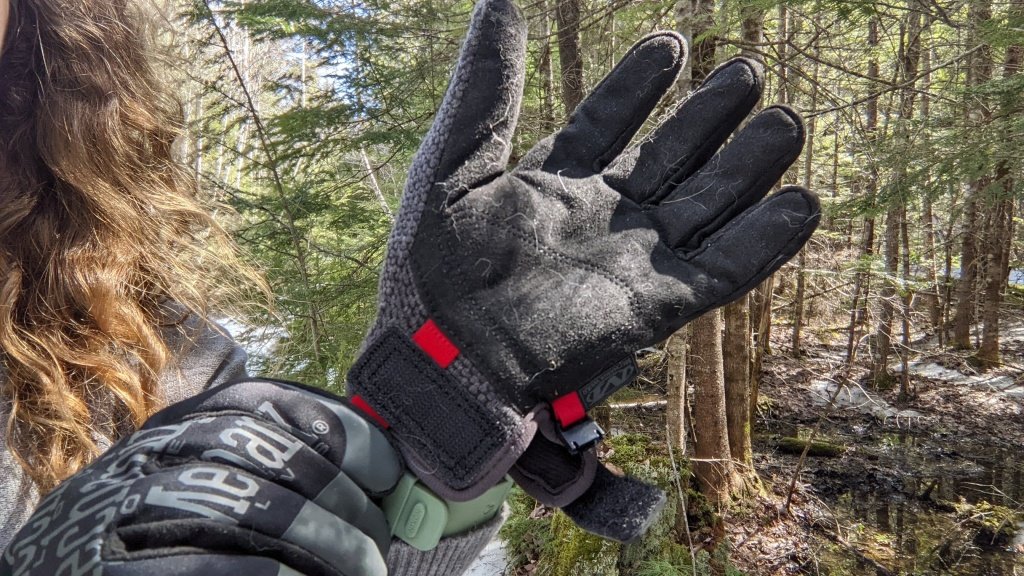Selecting the right outdoor adventure gloves is crucial for comfort, protection, and performance during various outdoor activities. Whether you’re hiking in cold weather, skiing down slopes, or climbing rugged terrain, the right gloves enhance dexterity, warmth, and durability to withstand environmental conditions and optimize your outdoor experience.
Assessing Your Outdoor Activity Needs
Before choosing outdoor adventure gloves, assess the specific needs of your activities, including weather conditions, terrain type, and hand protection requirements. Consider factors such as insulation, waterproofing, breathability, and grip to match glove features with your outdoor pursuits and performance expectations.

Understanding Glove Materials and Construction
1. Insulation and Warmth
Select gloves with appropriate insulation materials such as synthetic fibers (e.g., Thinsulate), down, or fleece to provide warmth and comfort in cold climates. Insulated gloves retain heat while regulating moisture to prevent hands from becoming cold and damp during outdoor adventures in winter or alpine environments.
2. Waterproofing and Breathability
Choose waterproof gloves with breathable membranes (e.g., Gore-Tex) or treated fabrics to repel moisture while allowing sweat vapor to escape. Waterproof gloves keep hands dry in rainy, snowy, or wet conditions, ensuring comfort and protection against frostbite, hypothermia, and prolonged exposure to moisture.
Selecting Glove Types Based on Activities
1. Skiing and Snowboarding Gloves
Opt for ski gloves or snowboarding gloves with reinforced palms, wrist closures, and insulation for warmth, flexibility, and grip on ski poles or snowboard bindings. Look for features like gauntlet cuffs, nose wipes, and touchscreen compatibility for convenience and functionality on snowy slopes.
2. Hiking and Mountaineering Gloves
Choose hiking gloves or mountaineering gloves with durable exteriors, articulated fingers, and reinforced palms for gripping trekking poles, ropes, and rock surfaces. Lightweight, moisture-wicking gloves offer breathability and dexterity for navigating trails, scrambling, and outdoor activities in variable weather conditions.
Evaluating Fit and Comfort
1. Glove Fit and Sizing
Ensure proper glove fit and sizing by measuring hand circumference and consulting size charts provided by manufacturers. Select gloves with pre-curved fingers, adjustable closures (e.g., Velcro straps, elastic cuffs), and articulated designs for a snug yet comfortable fit that promotes dexterity and flexibility during outdoor adventures.
2. Comfort Features
Look for comfort features such as fleece-lined interiors, soft thumb patches for wiping goggles or noses, and seamless construction to minimize chafing and irritation during prolonged wear. Test gloves for mobility and grip while considering ergonomic designs that enhance performance and comfort in challenging environments.
Considering Durability and Performance
1. Glove Durability and Construction
Assess glove durability based on materials, stitching quality, and reinforcement in high-wear areas (e.g., palms, fingertips). Choose gloves with abrasion-resistant exteriors, reinforced seams, and durable components that withstand rugged use and extended outdoor adventures without compromising performance.
2. Performance in Specific Conditions
Evaluate glove performance in specific outdoor conditions such as cold, wet, windy, or high-altitude environments. Select gloves with windproof shells, moisture-wicking linings, and thermal insulation suited to your adventure’s climate and intensity level to maintain hand warmth, comfort, and functionality.
Maintenance and Care Tips
1. Cleaning and Storage
Follow manufacturer guidelines for cleaning and maintaining outdoor adventure gloves to preserve performance and longevity. Hand wash gloves with mild detergent, air dry thoroughly away from direct heat, and store in a cool, dry place to prevent mold, mildew, or damage to waterproof membranes and insulation materials.
2. Replacement and Upgrade
Monitor glove condition regularly for signs of wear, tear, or reduced performance, such as compromised waterproofing or loss of insulation. Consider replacing gloves as needed to maintain optimal hand protection, comfort, and performance during future outdoor adventures and activities.
Conclusion
Choosing the right outdoor adventure gloves involves careful consideration of activity-specific needs, weather conditions, fit, comfort, and performance features to enhance hand protection, mobility, and enjoyment during outdoor pursuits. By selecting gloves with appropriate materials, insulation, waterproofing, and durability, outdoor enthusiasts can stay comfortable, warm, and well-prepared for diverse environmental challenges and adventures.











